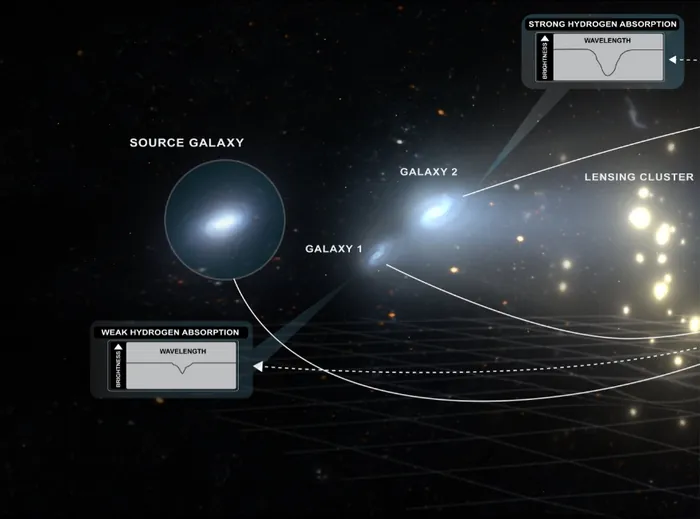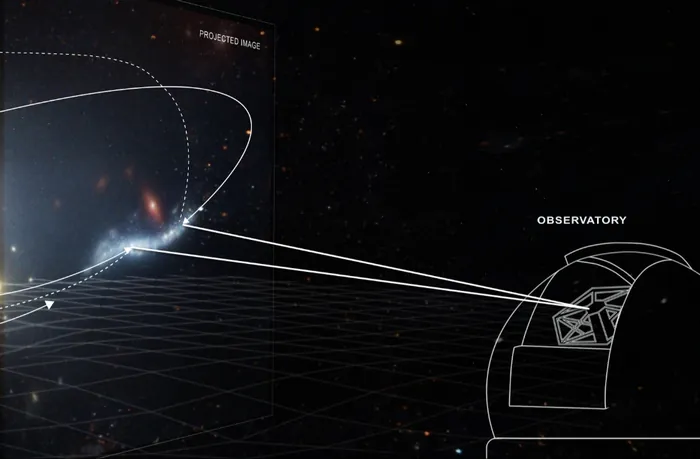© ROOT-NATION.com - Use of content is permitted with a backlink.
A unique new instrument combined with a powerful telescope and a little help from nature has given researchers the opportunity to look into galactic nurseries in the heart of the young universe. After a major explosion about 13.8 billion years ago, the young universe was filled with huge clouds of neutral diffuse gas known as Damped Lyman-α systems, or DLAs. These DLAs served as galactic nurseries because the gases contained in them slowly condensed, contributing to the formation of stars and galaxies. They can still be seen today, but it is not easy. “DLAs are a key to understanding how galaxies form in the universe, but they are typically difficult to observe since the clouds are too diffuse and don’t emit any light themselves,” said the author of the research, Rongmon Bordoloi, assistant professor of physics at North Carolina State University.
Currently, astrophysicists use quasars – supermassive black holes that emit light – as “backlight” to detect DLA clouds. And although this method allows researchers to pinpoint the location of DLA, light from quasars acts like small skewers through a massive cloud, making it difficult to try to measure their overall size and mass.

But Bordoloi and John O’Meara, chief scientist at the W.M. Keck Observatory in Kamuela, Hawaii, have found a way to circumvent this problem by using a gravity-lensing galaxy and integrated field spectroscopy to observe two DLAs and galaxies inside them that formed about 11 billion years ago, shortly after the Big Bang.
“Gravitationally lensed galaxies refers to galaxies that appear stretched and brightened,” Bordoloi says. “This is because there is a gravitationally massive structure in front of the galaxy that bends the light coming from it as it travels toward us. So we end up looking at an extended version of the object—it’s like using a cosmic telescope that increases magnification and gives us better visualization. The advantage to this is twofold: One, the background object is extended across the sky and bright, so it is easy to take spectrum readings on different parts of the object. Two, because lensing extends the object, you can probe very small scales. For example, if the object is one light year across, we can study small bits in very high fidelity.”
Spectrum readings allow astrophysicists to “see” elements of deep space that are not visible to the naked eye, such as diffuse gaseous DLAs and potential galaxies within them. Gathering the readings is usually a long and painstaking process. But scientists have solved this problem by conducting integrated spectroscopy with Keck Cosmic Web Imager.

Integrated field spectroscopy allowed researchers to obtain the spectrum in each individual pixel in the area of the sky to which it was directed, which made the spectroscopy of a long object in the sky very effective. This innovation, combined with an elongated and bright gravitational lens galaxy, allowed the team to map a diffuse DLA gas in the sky with high accuracy. Thanks to this method, researchers were able to determine not only the size of the two DLAs, but also the fact that they contain host galaxies.
“I’ve waited most of my career for this combination: a telescope and instrument powerful enough, and nature giving us a bit of lucky alignments to study not one but two DLAs in a rich new way,” O’Meara says. “It’s great to see the science come to fruition.”
By the way, DLAs are huge. With a diameter of more than 17.4 kiloparsecs, they are more than two-thirds larger than the size of the modern Milky Way galaxy. For comparison, 13 billion years ago the diameter of a typical galaxy was less than 5 kiloparsecs. A parsec is 3.26 light-years, and a kiloparsec is 1,000 parsecs, so light takes about 56,723 years to pass through each DLA.
You can also help Ukraine fight with Russian occupants via Savelife or via an official page of the National Bank of Ukraine.
Read also:
- Scientists found 830 million year old microbes, some are still alive
- NASA will shut down the InSight martian probe this year


